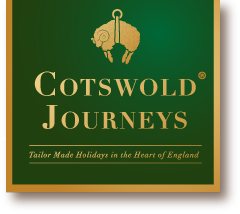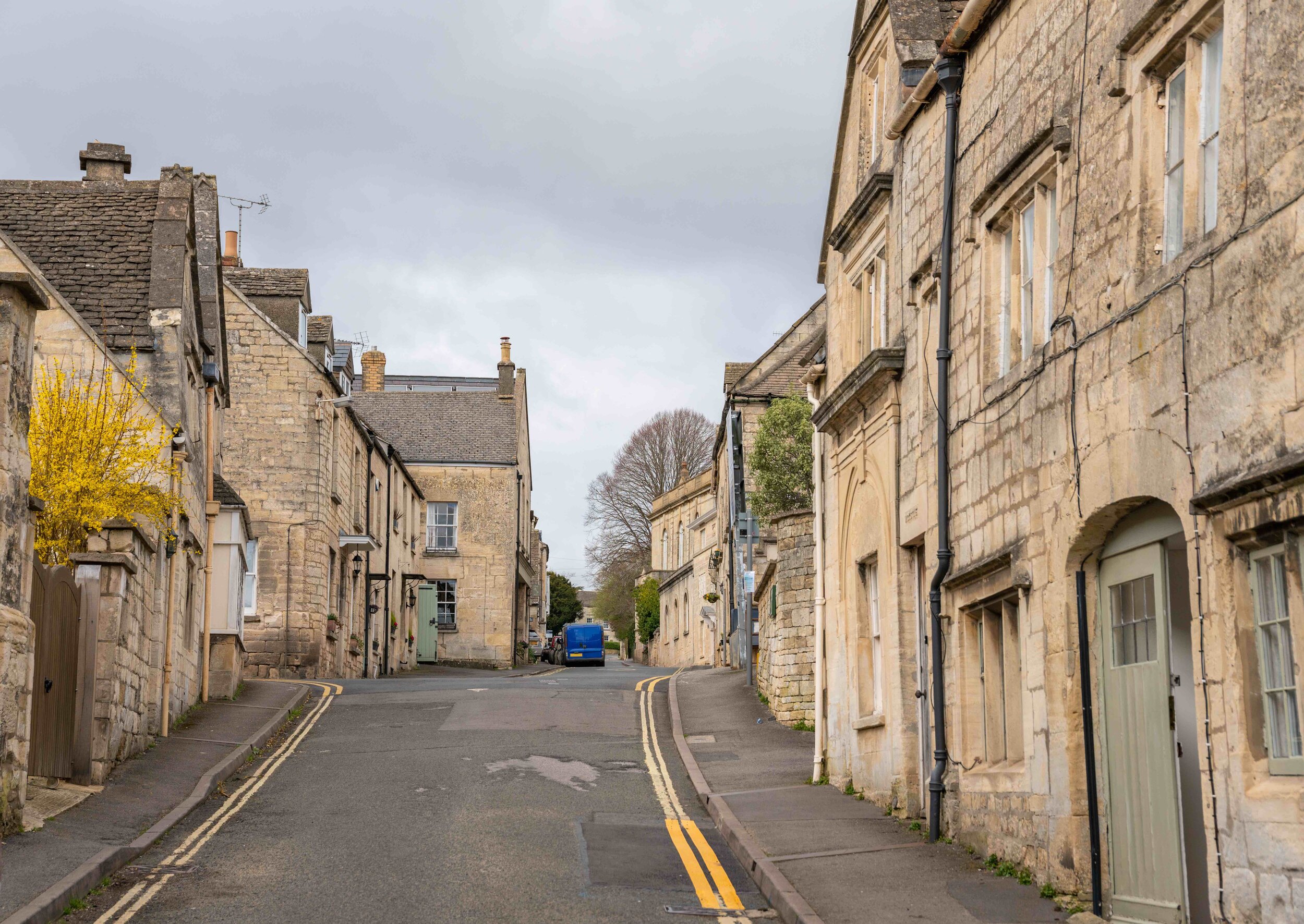Painswick is one of the loveliest villages in the Cotswolds, even though it has the misfortune to straddle the busy A46. In fact, it would be quite easy to pass through it on the way to somewhere else, but it is worth a stop for several reasons – the village itself is a delight to wander through, with its ancient center that is invisible from the road and with its cream and charcoal locally quarried stone, it is definitely of the southern part of the region. It is yet another village that grew out of the wool trade, now best known for its parish church’s yew trees and the local Rococo Garden. Many of the buildings feature south-facing attic rooms once used as weavers’ workshops. Geographically, Painswick is situated on a hill in the Stroud district, overlooking the Stroud valleys. There is evidence of settlement in the area as long ago as the Iron Age, as seen in the defensive earthworks atop nearby Painswick Beacon, which has wide views across the Severn Vale.
Over many centuries local life was dominated by the manor. The earliest recorded lord of the manor was Ernisi in 1050. The village is recorded in the Domesday Book under the lordship of Roger de Laci, who was banished in 1096 for supporting a rebellion against the King. At this time, the village was known as Wyke (spelled in various ways). Pain FitzJohn, lord of the manor (1121-1137), is thought to have given his name to the village. The village gradually became known as Pains Wyke, presumably to distinguish it from other villages of a similar name, and the current spelling evolved later. In 1253, Painswick was granted a charter to hold a weekly market.
Cloth weaving has been a fundamental part of the history of Painswick. The origins of the industry in Painswick are uncertain. However, it probably supported the substantial increase in the population of the parish – from 118 families in 1495 to 186 families in 1700 and to 4099 persons in 1831. Initially, the industry would have been small-scale cottage-based. Later, waterpower, from the relatively fast-flowing Painswick Stream (and its tributaries), revolutionized the production of cloth.
Some nineteen mills have been identified along these streams, though not all were involved in cloth manufacture at all times. For example, Cap Mill is known to have been producing cloth in 1729. The gradual introduction of steam power to the cloth industry – and the inability of Painswicks mills to take advantage of it – led to the industry’s long-term decline in Painswick from after about 1830.
Many of the fine old buildings in Painswick can be traced back to the heyday of the cloth-making industry. Built from limestone cut from local quarries, their construction was made possible by the wealth generated by the cloth-making industry. The subsequent decline has also impacted Painswick – in that many of these fine buildings were not replaced with newer ones!
During the first English Civil War (1642–1645) Gloucester was a Parliamentarian stronghold of some strategic importance. Consequently, it was surrounded by forces loyal to the King. After the siege of Gloucester was broken on 5 September 1643, the Royalist army, which had been surrounding the city, encamped overnight at Painswick. Some damage was caused by the troops and a scar from two small cannonballs can still be seen on the tower of St. Mary’s parish church.
People Of Painswick
Gerald Finzi, a composer, lived in Painswick from 1922-26 at a house called “Kingsmill”. Charles Wilfred Orr, a composer, lived in Painswick from 1934–76. Thomas Twining, the tea merchant, was born in Painswick in 1675, and in 1706 set up his first tea shop at 216 Strand, London, which was to become the home of the famous Twinings brand.
While Royalists were encamped in Painswick, tradition has it that King Charles went up to the Beacon and, seeing the beautiful valley to the east said “This must be Paradise”. Since then that valley, and the hamlet on its western side to the north of Painswick have been called Paradise.
During the 18th century a group of the gentry, led by Benjamin Hyett, organized an annual procession dedicated to Pan, during which a statue of the deity was held aloft, and people shouted ‘Highgates! Highgates!”. The tradition died out in the 1830s but was revived in 1885 by the new vicar, W. H. Seddon, who mistakenly believed that the festival had been ancient in origin. Seddon’s successor, however, was less appreciative of the pagan festival and put an end to it in 1950, when he had Pan’s statue buried,[8] although it was later dug up and placed within the grounds of Painswick House. Bow Wow Sauce, a sauce to be served with roast meats, was developed in Painswick.
Other Churches And Chapels
The Baptist Chapel on New Street was built in 1806 by the Wesleyan Methodists but was sold to the Baptists in 1831. The premises are now used by an estate agent. The Chapel of Our Lady and St. Teresa on Friday Street opened for Roman Catholic worship on 4 August 1934. On 15 June 1941, it was almost completely destroyed by a German bomb. It was subsequently restored and somewhat enlarged and is still used on a weekly basis. The Friends Meeting House on Vicarage Street was built in 1705/6, refurbished in 1793/4, and closed in 1894. It re-opened in 1952. The burial ground, to the north of Dell Farm, has been in use since 1658. Ebenezer Chapel, formerly Primitive Methodist, in Bisley Street was built in 1854. The United Reformed Church in Gloucester Street was built as a Congregational chapel in 1803, was extensively altered in 1892, and was renamed “The Cornelius Winter Memorial Chapel”.
Notable People
Gerald Finzi, a composer who lived in Painswick from 1922-26 at a house called “Kingsmill”
Charles Wilfred Orr, a composer, lived in Painswick from 1934–76
Thomas Twining, tea merchant, born in Painswick in 1675, and who in 1706 set up his first tea shop at 216 Strand, London, which was to become the home of the famous Twinings brand


0 Comments